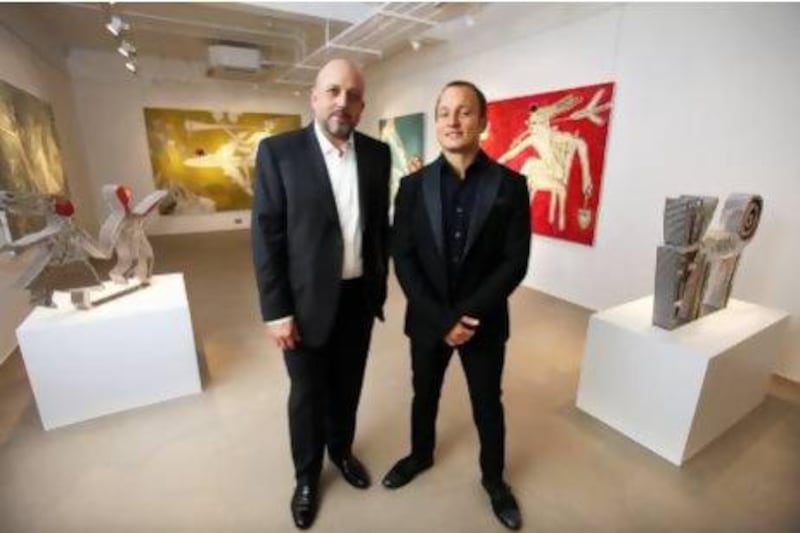The Dubai-based cousins Hisham and Khaled Samawi launched their first Ayyam Gallery in Damascus almost seven years ago. Now they have two spaces in Dubai, one in Beirut and another scheduled to open in Jeddah in February - and Ayyam London has just opened its doors with a solo show by the Lebanese superstar Nadim Karam. Hisham Samawi, 35, explains the gallery's success, why Londoners are hungry for work from the Middle East and how the duo's greatest achievement has been rescuing Syrian artists from a war zone.
Why did you choose to expand into London and Jeddah?
Over the past couple of years there have been more people coming from the West to Dubai - especially during Art Dubai - to find out what's happening with this Middle Eastern art scene. London is a good platform to allow people to have 365-days-a-year access to that.
With Jeddah, it's about the viability of the Saudi market as well as access to the artists. When we open, we'll be announcing a competition for young artists to get that fresh, raw talent and nurture it - and hopefully, through our incubator programmes, one day exhibit them in London.
Why did you choose Nadim Karam for the opening London show?
He has a presence in London already; he has an installation that's been here for 10 years at Notting Hill Gate. He has also done big installations in Australia and Japan. He's a global talent who just happens to be from the Middle East.
Where did you and your cousin grow up?
Both our parents are from Syria. We were born in Libya but raised in Switzerland. Then he [Khaled] stayed in Switzerland and I lived in the US.
What was it like setting up the first gallery in Damascus?
It started almost as an experiment, just to see if there was a contemporary art scene. It was early 2006: Christie's had just come [to Dubai] and Iranian art was just starting to rise to fame. We had a competition to find young artists, and most of our roster today came from that competition. There were young, undiscovered artists who were doing these amazing paintings. The gallery started almost as a reaction to finding this wealth of talent who had no voice, and grew from there.
What's happening at Ayyam Damascus now?
About two years ago, we realised that [the situation there] was not going in a good direction, so we moved a lot of our collection from Syria to Dubai. At the same time we started moving some of our staff and artists - the ones we could - to Dubai or Cairo or Lebanon.
There are a lot of artists who had their studios in the outskirts of Damascus, where there was violence. We moved them to [central] Damascus, which was relatively stable, and we stopped doing exhibitions at the gallery and turned it into an artists' studio compound where the artists could come and work and be safe. Some of them were even sleeping there. But even those guys now, we're doing our best to get them out of Damascus, because it's getting worse and worse.
And you streamed footage from this studio over the internet?
During that time we had four artist studios. We'd have four camera feeds with live web streams where people could tune in and watch these artists working every day. It was great because the artists felt this connection to the outside world, like what they were doing was important and people were watching them. It was almost like reality TV; you could watch the development of a painting. Now we can't even do that because they cut off the internet, but we were doing that for a good year and a half.
What else do you have in the pipeline?
In March, we're launching an online portal to sell limited-edition prints and multiples by one or two hundred artists at affordable prices. The website will also educate people on what's happening with Middle Eastern art and how to build a collection.
You've had a lot of acclaim for your galleries, including winning a "Best in Dubai" award. Does it feel like you're forging new ground?
Accolades are great but for us the real benefit of it is to see our artists be successful. When I look at what's happening now in Syria and think if we didn't start this thing when we did there'd be 50 or 60 artists who would still be stuck there, who would never have made this art - that is the biggest triumph.
Exhibition: Nadim Karam
Dates: Until March 9, 2013
Location: 143 New Bond Street
Website: www.ayyamgallery.com





